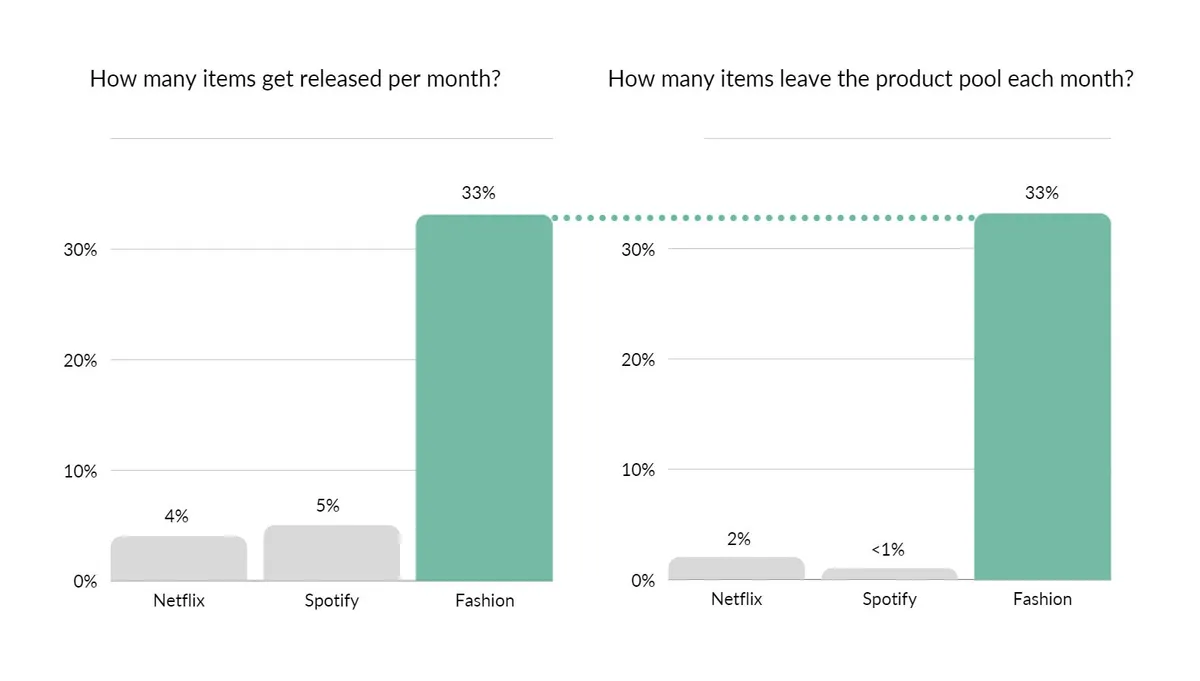How to Reduce the “Google Tax”: Fixing fashion retailers’ product enrichment data to drive down customer acquisition costs.
“Ugh, the Google tax.” This is a common response from fashion brands facing rising customer acquisition costs.
Research from SimplicityDX shows that customer acquisition costs have surged by 222% over the past eight years, with significant spikes in the last four years.
Before COVID-19, fashion brands and retailers advertised across various channels, both online and offline. When the pandemic hit, businesses shifted all marketing budgets to online advertising. This initially boosted online sales, but as more offline businesses moved online, customer acquisition costs soared and advertising campaigns became less effective.
The fashion industry faces unique challenges that exacerbate this problem. On average, 33% of products on a fashion retailer’s site are new each month, compared to 5% for other categories. These products need to be sold within 10-12 weeks, requiring constant updates to product attribute data—a task often poorly executed by junior staff who may not understand its importance. As a result, it is often irrelevant, inaccurate, and incomplete.
Good quality, relevant product enrichment data is the new oil to supercharge all parts of the business. Getting these foundations right can transform every stage of its critical path. Performance marketing is no exception.
The old adage of garbage in = garbage out is true on Google too. If the product data is inconsistent or incomplete, Google outcomes will be worse and result in increased spend. It will also produce lower-quality ads which cause longer-term reputational damage.
Retailers who can get their data house in order will find themselves with a significant competitive advantage and, more importantly, significantly more cash in the bank to fuel further growth
Three Key Fixes to Reduce the “Google Tax”
Get your product data right. Google shopping ads are ranked by the number of relevant features, which then impact where the ad appears in relevant search results. Good accurate product data means that ads will appear in the right place, improving the ranking and reducing the CAC.
-
Relevant Data: Fashion product data needs to be relevant to the customer. Relevancy = Conversions. Use attribute data that reflects how customers think about products. While some attributes are universal for all fashion categories (brand, colour, material, pattern, size etc) but there are differences too (neckline, occasion, style, length, how it makes you feel etc). The more relevant the data the less it will cost to keep it visible and conversion will be higher.
-
Accurate Data: Inaccurate data will start to reduce the visibility of your products as they will not be relevant to the customer. The integrity of the data matters. Fashion is complex; we all look and feel good in different items so getting these attributes accurate is critical. For example, different neckline styles appeal very differently to customers with a large bust. Understanding the difference between a crew neck, round neck and scoop neck may not seem important but believe me, it makes a difference and will significantly impact sales.
-
Complete Data: Similarly here, working out what is the RIGHT data and ensuring it is complete across all products is key. Having incomplete data will naturally rank your brand lower than others.
Once you have fixed those 3 key areas you’ll be able to implement better strategies, relevant product titles, and descriptions which will, in turn, reduce your customer acquisition cost even further.
Automate for Efficiency
Managing data manually for hundreds or thousands of new products each month is inefficient and error-prone. Automated solutions can streamline this process, ensuring high-quality data across all platforms. Be wary of solutions relying purely on computer vision (we’ll do another post on that next week).
Dressipi has over a decade of experience working with fashion brands. Our head stylists have developed the best taxonomy in the industry (proven in independent AB tests), offering deep, detailed, consistent data in the customer’s language.
We use CV and AI to do the heavy lifting but have developed a state-of-the-art labelling system that ensures our trained fashion stylists can ensure every single one of our 30K + attributes is correct.
If you need a product data audit or want to enhance your data strategies, please do get in touch.


